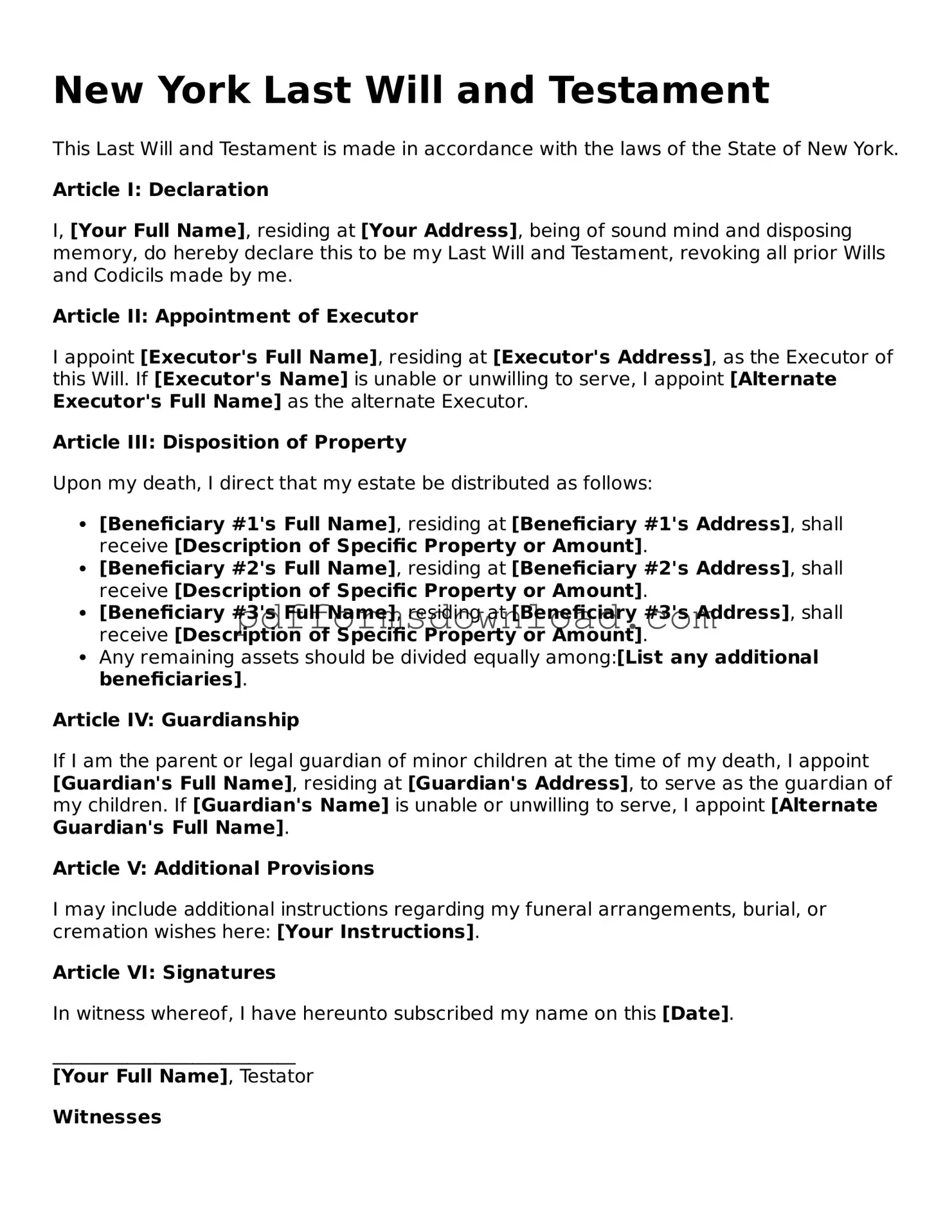What is a Last Will and Testament?
A Last Will and Testament is a legal document that outlines how a person's assets and affairs should be handled after their death. It allows you to specify who will inherit your property, name guardians for minor children, and appoint an executor to manage your estate.
Who can create a Last Will and Testament in New York?
In New York, any person who is at least 18 years old and of sound mind can create a Last Will and Testament. This means you must understand the nature of your actions and the consequences of making a will.
Do I need a lawyer to create a Last Will and Testament?
While it is not required to have a lawyer, it is highly recommended. A lawyer can help ensure that your will meets all legal requirements and accurately reflects your wishes. If your estate is complex, professional guidance can be invaluable.
What are the requirements for a valid will in New York?
To be valid in New York, a will must be in writing, signed by the testator (the person making the will), and witnessed by at least two people. The witnesses must also sign the will in the presence of the testator. It’s important that the witnesses are not beneficiaries of the will to avoid any conflicts of interest.
Can I change my Last Will and Testament after it is created?
Yes, you can change your will at any time while you are still alive. This can be done by creating a new will or by making a codicil, which is an amendment to your existing will. Just remember that any changes must also meet the legal requirements to be valid.
What happens if I die without a will in New York?
If you die without a will, your estate will be distributed according to New York's intestacy laws. This means that your assets will be divided among your relatives, which may not align with your wishes. Having a will allows you to control how your estate is handled.
How do I revoke an existing will?
You can revoke a will by creating a new one that explicitly states the previous will is revoked. Alternatively, you can physically destroy the old will or write a statement declaring it revoked. It’s best to inform your executor and any witnesses about the change.
Can I write my own Last Will and Testament?
Yes, you can write your own will, known as a holographic will. However, it must still meet New York's legal requirements. Handwritten wills can be risky, as they may not cover all necessary details or may not be recognized if not properly executed.
What should I do after creating my will?
Once your will is created, store it in a safe place, such as a safe deposit box or with your attorney. Make sure your executor and trusted family members know where to find it. Regularly review and update your will as needed to reflect any changes in your life circumstances.
